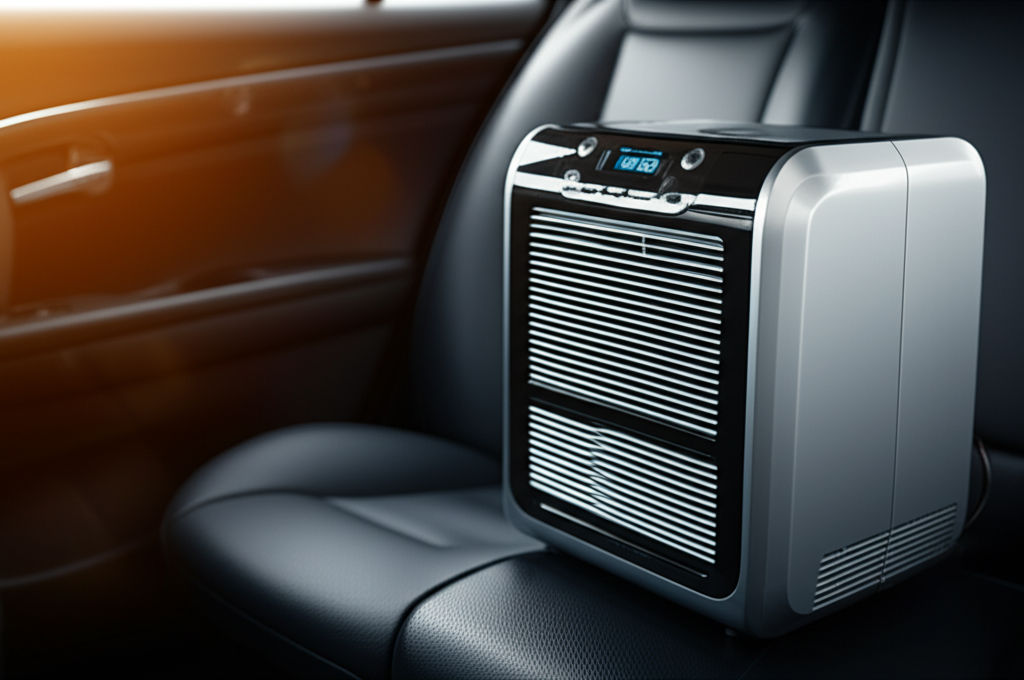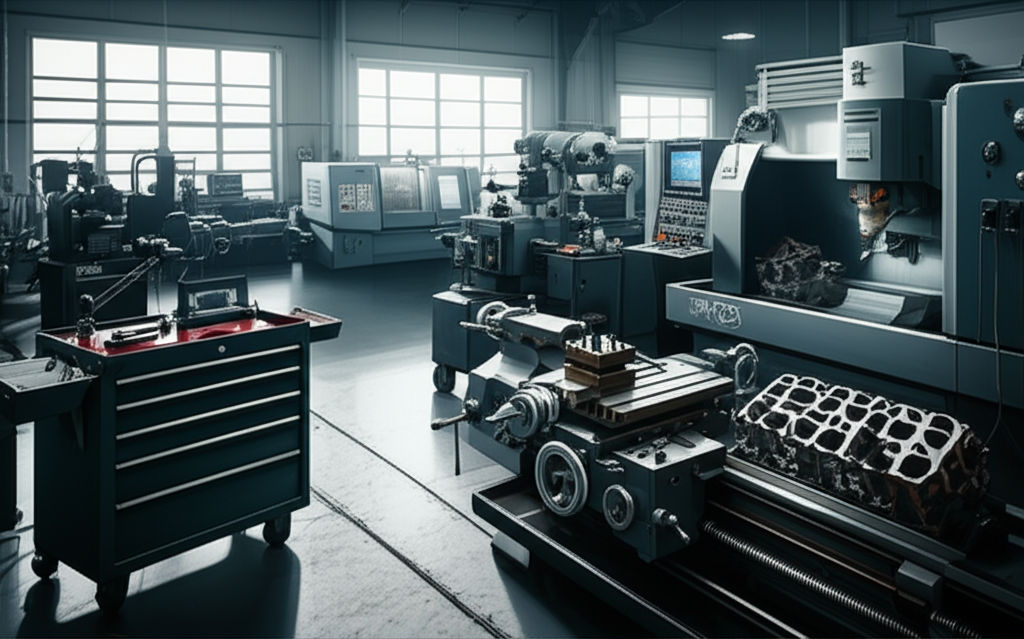Portable Automotive Air Conditioner Buying Guide
Ellie Moore

Photo: Transform hot drives into cool cruises! Our guide to portable car ACs offers instant relief, efficiency, and versatility for ultimate comfort.
Beat the Heat on the Road: Your Ultimate Guide to Portable Automotive Air Conditioners
Imagine this: The sun is blazing, your car has been parked for hours, and stepping inside feels like entering an oven. Your built-in AC might be struggling, or perhaps your vehicle doesn't even have one. This is where a portable automotive air conditioner becomes your ultimate road trip companion, turning sweltering journeys into comfortably cool cruises. These compact devices are gaining immense popularity as a practical solution for instant relief from the heat, whether you're commuting, camping, or just waiting in a parked car.
But with a market full of options, choosing the right portable car AC unit can feel overwhelming. This comprehensive buying guide will equip you with the knowledge to make an informed decision, ensuring you stay cool, comfortable, and focused on the road ahead.
Why Consider a Portable Automotive Air Conditioner?
While your car's integrated AC system is designed for optimal cooling, portable units offer unique advantages that make them a worthwhile investment:
- Instant Cooling on Demand: Unlike traditional car ACs that can take several minutes to cool down a hot cabin, portable units are engineered to provide rapid cooling, offering immediate relief within moments of activation.
- Enhanced Energy and Fuel Efficiency: Many portable car ACs operate on rechargeable batteries or a car's 12V power outlet, reducing the reliance on your engine for power. This can lead to significant fuel savings, especially during peak summer months, and minimize wear and tear on your vehicle's built-in system.
- Cost-Effective Cooling Solution: Repairing or upgrading a traditional car AC can be an expensive endeavor. Portable air conditioners offer a much more affordable alternative, providing sufficient cooling without the high costs associated with major repairs or installations.
- Versatility and Portability: As their name suggests, these units are highly portable and can be easily moved between vehicles. This makes them ideal for families with multiple cars, RVs, trucks, or even for use in tents, small indoor spaces, or during outdoor adventures like camping and picnics.
- Improved Air Quality: Many portable car ACs come with built-in air purification and filtration features, helping to remove dust, pollen, and other pollutants from the air inside your vehicle. This is a significant benefit for individuals with allergies or respiratory issues, contributing to a healthier and more comfortable driving environment.
- Prevents Overheating: If your car's built-in AC is unreliable, a portable unit can serve as a crucial backup, preventing your car's interior from becoming excessively hot, which can be uncomfortable and even dangerous in extreme conditions.
- Ability to Work with Engine Off: A key advantage is their ability to function independently of your vehicle's engine, allowing you to stay cool even when parked or camping without draining your main car battery (especially with dedicated power sources).
Understanding the Types of Portable Automotive Air Conditioners
Not all portable cooling devices are created equal. It's crucial to understand the different types available to match your specific needs:
1. Evaporative Coolers (Swamp Coolers)
These units work by drawing in warm air over a water-soaked pad. As the water evaporates, it cools the air, which is then blown out into the space.
- Pros: Generally more affordable, consume less power, and are quieter than compressor-based units. They can also humidify the air, which is beneficial in dry climates.
- Cons: Their effectiveness significantly decreases in humid environments, as the air is already saturated with moisture, limiting evaporation. They don't offer "true" refrigeration and may not cool an entire vehicle effectively, often creating a "personal cooling zone." They also require regular water refills.
2. Compressor-Based Units (True Portable ACs)
These operate on a similar principle to your home or car's traditional air conditioner, using a refrigerant cycle to actively remove heat and humidity from the air. They typically have an exhaust hose to vent hot air outside the vehicle.
- Pros: Provide genuine cooling and dehumidification, effective in all climates, including humid ones. Offer more powerful cooling capacity, measured in BTUs (British Thermal Units).
- Cons: Generally more expensive, heavier, and consume more power than evaporative coolers. They can also be noisier and require proper venting of hot air. Some models may require draining of collected water, especially in humid conditions.
3. Fan-Based Ventilators (Not True AC)
While not air conditioners, some portable devices are essentially powerful fans that circulate air. They might be marketed as "coolers" but do not actively lower the air temperature.
- Pros: Very affordable, lightweight, and consume minimal power.
- Cons: Only provide air circulation and can feel like blowing hot air around in extremely hot conditions. They do not dehumidify or truly cool the space.
Key Features to Look for in a Portable Car AC
When choosing your ideal portable auto air conditioner, consider the following crucial features:
1. Cooling Capacity (BTUs)
Measured in British Thermal Units (BTUs), this indicates the unit's cooling power. A higher BTU rating means more cooling capacity.
- Recommendation: For personal cooling in a small space, lower BTUs might suffice. For cooling a car cabin, SUV, or RV, aim for at least 2,000 BTUs for true AC units. Some powerful units can offer 5,100 BTU or more.
2. Power Source and Consumption
Portable ACs can be powered in several ways:
- 12V DC Car Outlet (Cigarette Lighter): Common for smaller units, but larger compressor-based ACs can quickly drain a car battery if the engine isn't running.
- Rechargeable Battery: Offers excellent portability and allows the unit to run independently of the car's engine. Battery life varies, typically from 2 to 8 hours on a full charge.
- 110V/120V AC (Standard Wall Outlet): Requires an inverter if used from a car battery or a standard power outlet when parked.
- Solar Power: Some advanced models can be charged via solar panels, offering an eco-friendly option for off-grid use.
- Consumption: Portable ACs can use anywhere from 400 to 2000 watts. A 6000 BTU unit might draw 7.4 to 8.3 amps (890-1000 watts) at 120 volts. Be mindful of your car's alternator output if relying on the vehicle's power.
3. Portability and Size
Consider the unit's dimensions and weight.
- Lighweight and Compact: Ideal for easy transport and fitting into confined vehicle spaces.
- Design: Look for a compact design that won't obstruct your view or take up too much valuable space.
4. Noise Level
Measured in decibels (dB), noise can significantly impact comfort, especially in a confined vehicle.
- Recommendation: Look for units rated below 50 dB for comfortable in-car use, comparable to a quiet conversation. Some units offer "sleep mode" for quieter operation, around 36-44 dB.
5. Ease of Installation and Use
A good portable AC should be user-friendly and require minimal setup.
- Plug-and-Play: Many units simply plug in, requiring no complex tools.
- Venting: Compressor-based units require an exhaust hose to vent hot air. Ensure the kit is easy to set up in a window or door.
6. Maintenance Requirements
Consider how easy the unit is to clean and maintain.
- Filters: Most portable car ACs have washable filters that should be cleaned every two weeks to maintain efficiency.
- Water Drainage: If the unit collects condensate, check if it has a removable tank or a drainage hose, and how often it needs to be emptied.
7. Additional Features
Many units offer extra functionalities that enhance their value:
- Adjustable Fan Speeds and Temperature Settings: For customizable comfort.
- Remote Control/Smart App Control: For convenient operation.
- Heating Functionality (Reverse-Cycle): Some advanced units can also provide heat, making them versatile for all seasons.
- Air Purification/Filtration: To improve air quality.
- Timer Functions: To program automatic on/off times.
- USB Charging Ports: For charging other devices.
Setting Up and Using Your Portable AC Effectively
Once you've chosen your **portable automotive
Finance & Investment
View All
January 4, 2025
Best Jobs for Finance MajorsYour blueprint to expert SEO content! Learn to craft valuable, authoritative content that ranks high, meets user needs, and deeply engages your audience.
Ellie Moore

April 15, 2025
Honda Finance Login Quick Access GuideElevate your brand with expert SEO content. Discover your blueprint for higher rankings, organic traffic, and establishing online authority and trust.
Ellie Moore

April 9, 2025
What Is a Bond in Finance ExplainedMaster expert SEO content! Learn to create strategic, audience-focused content that satisfies E-E-A-T, drives organic traffic, and builds brand authority.
Ellie Moore

October 21, 2025
Mortgage Financing for BeginnersMaster expert SEO content for higher rankings & traffic. Build authority, trust, and stand out with E-E-A-T-driven value.
Ellie Moore

June 19, 2025
Recreational Vehicle Finance Made SimpleGo beyond keywords! Learn to craft expert SEO content that ranks higher, engages readers, and establishes your brand as a leader with valuable resources.
Ellie Moore

October 6, 2025
Best Schools to Study FinanceUnlock lasting online success with expert SEO content. Learn to create valuable, E-E-A-T driven content that satisfies search engines and human readers.
Ellie Moore
Insurance
View AllDiscover how insurance companies assess and manage high-risk clients while providing customized solutions for unique challenges.
Ellie Moore
Learn how gig workers can protect themselves with insurance solutions designed for freelance and flexible work.
Ellie Moore
Before you travel, get the essential tips for choosing the perfect travel insurance policy for peace of mind.
Ellie Moore
Protect your paycheck with disability insurance. Learn why income protection is a must-have for financial security.
Ellie Moore
Discover how lifestyle changes, like quitting smoking or driving less, can unlock insurance discounts. Start saving now!
Ellie Moore
Save on health insurance without losing essential coverage. Discover practical tips to reduce premiums and manage costs wisely.
Ellie Moore
Education
View AllPlay is crucial in early learning! Discover how play-based learning enhances cognitive, emotional, and social development in young children.
Read MoreDiscover how AI-powered personalized learning is reshaping education. Learn how smart tech tailors content to fit individual student needs.
Read MoreDiscover how assistive technology empowers special needs learners. Learn about tools that foster inclusivity and enhance educational outcomes.
Read MoreDiscover why liberal arts education remains valuable in today’s tech-driven world. Explore how it fosters critical thinking and adaptability.
Read MoreDifferent cultures approach early education in unique ways. Discover how cultural values shape learning practices for young children around the world.
Read MoreDiscover how flipped classrooms work and why they’re becoming popular. Learn the key benefits of this innovative teaching approach.
Read MorePopular Post 🔥
View All
1
2
3
4
5
6
7
8
9
10
Health






Automotive
View All
July 12, 2025
Automotive Technician Salary Insights And Facts
Discover the evolving role and salaries of tech-savvy automotive technicians. Get insights into earning potential, from entry-level to experienced pros.

September 13, 2025
LW Automotive LLC Cars You Can Depend On
Discover how LW Automotive LLC engineers dependable cars built for longevity & performance. Get peace of mind with a truly reliable vehicle.

July 23, 2025
Find Reliable Automotive Machine Shops Near Me
Locate top automotive machine shops for engine repair. Ensure your vehicle's performance, longevity, and save money with expert engine services.

August 27, 2025
Premium Automotive Services For High End Cars
Luxury & exotic cars demand premium care. Discover why specialized services are essential to preserve their performance, stunning aesthetics, and long-term valu...

August 27, 2025
Peppers Automotive Paris TN Reviews And Info
Peppers Automotive Paris TN: Your go-to for new & used Toyota, Chevy, GMC, CDJR vehicles & expert service. Find your perfect car or truck today!

September 2, 2025
How To Use An Automotive Dent Puller Effectively
Banish car dents like a pro! Our guide shows you how to use automotive dent pullers for DIY repair, saving money & restoring your car's look.

















